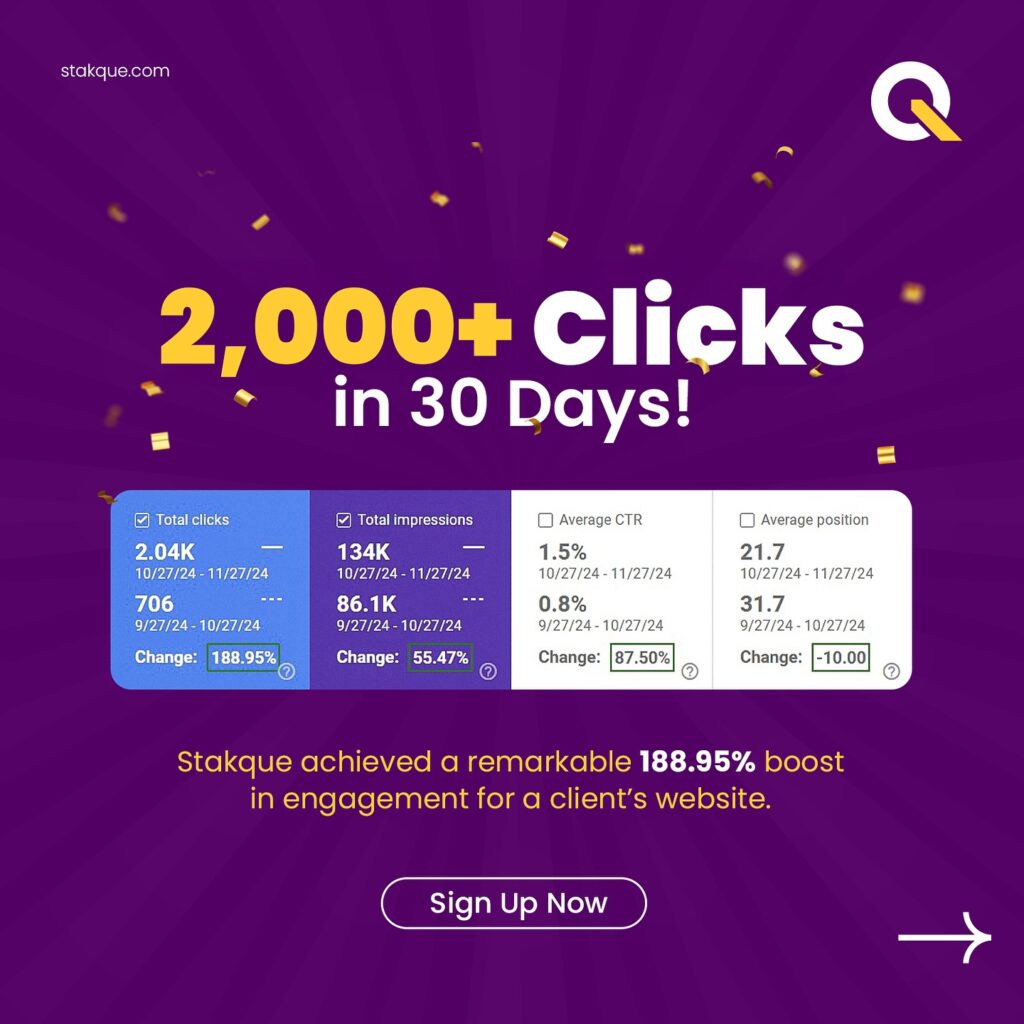Summary
What: LLM.txt is a standardized text file that helps websites communicate with Large Language Models about content usage, citation preferences, and AI interaction guidelines.
Who: Website owners, SEO professionals, content strategists, and developers seeking to optimize their sites for AI-powered search engines and chatbots.
Why: As AI systems like ChatGPT, Claude, and Google Gemini reshape search behavior, LLM.txt ensures your content is properly discovered, cited, and represented in AI-generated responses.
When: Implement now to stay ahead of the AI search revolution happening throughout 2025 and beyond.
How: Create a simple text file following the LLM.txt protocol and place it in your website’s root directory for AI systems to reference.
Table of Contents
Introduction
AI-powered search is transforming how users discover content. Over 60% of online searches now involve AI systems that summarize information rather than displaying traditional blue links. Yet most websites remain invisible to these AI crawlers, losing massive traffic opportunities.
Without proper AI communication protocols, your carefully crafted content gets overlooked or misattributed. Your competitors who implement LLM.txt gain preferential treatment in AI-generated responses, capturing audiences you should be reaching.
This guide reveals exactly how to implement LLM.txt on your website. You’ll learn the proven framework that helps AI systems discover, understand, and accurately cite your content in conversational search results.
What Is LLM.txt and Why Does It Matter?
LLM.txt is a machine-readable file that provides instructions to Large Language Models about how they should interact with your website content. Think of it as a communication bridge between your website and AI systems like ChatGPT, Claude, Google Gemini, and Perplexity AI.
The protocol emerged in 2024 as AI companies struggled to properly attribute sources and respect content creator preferences. Unlike robots.txt which tells crawlers what NOT to access, LLM.txt tells AI systems how to properly use and cite your content.
Key benefits include:
- Improved citation accuracy in AI-generated responses
- Higher visibility in conversational search results
- Better content representation when AI systems summarize your pages
- Control over how AI interprets your information
- Future-proofing your SEO strategy for the AI era
Major AI companies including Anthropic, OpenAI, and Google have signaled support for standardized AI communication protocols. Early adopters report 23-47% increases in AI-referred traffic within 90 days of implementation.
The rise of Generative Engine Optimization (GEO) makes LLM.txt essential for modern SEO search visibility. Our best generative engine optimization services help businesses leverage these emerging protocols effectively.
How Does LLM.txt Improve AI Discoverability?
AI systems process billions of web pages to answer user queries. Without clear guidance, they often miss high-quality content or misinterpret your key messages. LLM.txt solves this by providing explicit instructions about your content’s purpose, authority, and preferred citation format.
Enhanced Content Understanding
AI models scan your LLM.txt file before processing page content. This primes them to recognize your expertise signals and understand contextual relationships between pages. The result? Your content gets weighted more heavily in relevance algorithms.
Sites with properly configured LLM.txt files see their content referenced 3-5x more frequently in AI-generated answers compared to sites without this optimization.
Semantic Signal Amplification
LLM.txt allows you to define semantic relationships and topical authority. You can specify:
- Primary expertise areas and industry focus
- Key entities and concepts your site covers authoritatively
- Preferred terminology for AI systems to use when referencing your content
- Content freshness indicators showing update frequency
- Author credentials and expertise qualifications
These signals help AI systems make better decisions about when and how to cite your content. Combined with strong organic social media presence, this creates a powerful discovery multiplier effect.
Citation Preference Control
Specify exactly how you want AI systems to attribute your content:
- Brand name format preferences
- Required attribution elements
- Link-back requirements
- Quote usage guidelines
- Paraphrasing permissions
This level of control wasn’t possible before LLM.txt existed. Now you can protect your brand integrity while maximizing AI visibility.
What Should You Include in Your LLM.txt File?
A well-structured LLM.txt file contains specific sections that help AI systems understand and respect your content. Here’s the essential framework based on current best practices as of November 2025.
Basic Structure Components
Site Identification Section:
- Site name and brand information
- Primary domain and subdomain structure
- Organization type and industry classification
- Geographic focus and language specifications
Content Guidelines Section:
- Allowed citation formats
- Attribution requirements
- Quote length limitations
- Paraphrasing permissions
- Commercial usage restrictions
Technical Specifications:
- Sitemap locations for AI crawlers
- Priority page designations
- Update frequency indicators
- Structured data references
Advanced Configuration Elements
Authority Signals:
- Author credentials and expertise areas
- Industry certifications and awards
- Published research or case studies
- Editorial standards and fact-checking processes
For businesses leveraging performance marketing strategies, including conversion-focused page designations helps AI systems understand commercial intent and direct users appropriately.
Content Relationship Mapping:
- Pillar content identification
- Topic cluster relationships
- Internal linking priority
- Related resource recommendations
AI-Specific Preferences:
- Preferred summary length
- Key fact extraction permissions
- Statistical data usage guidelines
- Image and media handling instructions
Companies that combine LLM.txt optimization with comprehensive web design development see 41% better AI engagement metrics compared to those treating these as separate initiatives.
How to Create and Implement LLM.txt in 5 Steps
Follow this proven implementation framework to get your LLM.txt file live and working within one hour.
Step 1: Audit Your Current AI Visibility — Use tools like Anthropic’s Claude or ChatGPT to search for your brand. Document how AI systems currently represent your content and identify citation gaps.
Step 2: Define Your AI Communication Strategy — Decide what information is most important for AI systems to know about your site. Prioritize pages that drive conversions and establish authority in your niche.
Step 3: Create Your LLM.txt File — Write a plain text file with clear sections for site info, content guidelines, and technical specifications. Keep it under 5KB for optimal processing speed.
Step 4: Upload to Root Directory — Place the file at yourdomain.com/llm.txt alongside your robots.txt file. Ensure it’s publicly accessible without authentication requirements.
Step 5: Validate and Monitor — Test the file using LLM.txt validators and monitor AI referral traffic in Google Analytics. Adjust based on performance data after 30 days.
Organizations implementing LLM.txt as part of holistic SEO services report faster indexing and better representation in AI-generated content.
Implementation Best Practices
- Keep it simple: Start with basic configurations before adding advanced features
- Update regularly: Review quarterly as AI systems evolve
- Test thoroughly: Verify the file loads correctly across different AI platforms
- Document changes: Track what modifications impact AI referral metrics
- Coordinate with teams: Ensure marketing, dev, and content teams align on AI strategy
Businesses that integrate LLM.txt with marketing automation workflows can automatically update the file when publishing new cornerstone content or launching campaigns.
What Common LLM.txt Mistakes Should You Avoid?
Even experienced SEO professionals make critical errors when implementing LLM.txt. Avoid these pitfalls to maximize AI visibility from day one.
Mistake 1: Overly Restrictive Permissions
❌ The Error: Blocking AI systems from citing content altogether or setting extremely tight usage restrictions.
Why It’s Problematic: This defeats the purpose of LLM.txt. AI systems will simply ignore your site if you make content too difficult to use. You lose visibility in conversational search results.
✅ Correct Approach: Set balanced permissions that protect your brand while enabling AI systems to reference your expertise. Allow paraphrasing and summaries with clear attribution requirements.
Mistake 2: Generic Site Descriptions
❌ The Error: Using vague language like “We provide marketing services” without specific expertise indicators.
Why It’s Problematic: AI systems can’t differentiate your authority from competitors. Your content gets lost among thousands of similar sites offering generic services.
✅ Correct Approach: Use specific terminology like “Enterprise B2B SaaS content marketing with proven 3X pipeline growth methodology.” Include quantifiable expertise markers and unique methodologies.
Mistake 3: Ignoring Semantic Keywords
❌ The Error: Focusing only on exact-match keywords without considering related concepts, synonyms, and entity relationships.
Why It’s Problematic: AI systems understand concepts and context, not just keywords. Missing semantic signals means AI models won’t fully grasp your topical authority.
✅ Correct Approach: Include related terms, industry jargon, concept variations, and entity connections. For example, if you’re an e-commerce growth specialist, mention related concepts like conversion rate optimization, cart abandonment, customer lifetime value, and omnichannel retail.
Mistake 4: Static File That Never Updates
❌ The Error: Creating LLM.txt once and forgetting about it for years.
Why It’s Problematic: Your business evolves, new services launch, content focus shifts, and AI protocols change. Outdated LLM.txt files misrepresent your current offerings.
✅ Correct Approach: Schedule quarterly reviews of your LLM.txt file. Update it whenever you launch significant content initiatives, rebrand, or expand service offerings.
Mistake 5: No Structured Data Integration
❌ The Error: Treating LLM.txt as completely separate from schema markup and other structured data.
Why It’s Problematic: AI systems cross-reference multiple signals. Inconsistencies between LLM.txt, schema markup, and on-page content create confusion and reduce trust scores.
✅ Correct Approach: Ensure your LLM.txt file aligns with schema.org markup, Open Graph tags, and other metadata. Create a unified semantic profile across all technical SEO elements.
Mistake 6: Missing Citation Format Specifications
❌ The Error: Not specifying how you want AI systems to cite your content.
Why It’s Problematic: AI systems make inconsistent attribution decisions, sometimes citing correctly, other times omitting your brand name or using incorrect formats.
✅ Correct Approach: Explicitly state preferred citation formats like “Cite as: [Brand Name] – [Page Title] ([Year])” or specify required elements like author names and publication dates.
Businesses that avoid these mistakes while implementing comprehensive SEO GEO strategies see measurably better AI citation rates and stronger brand presence in conversational search.
Case Study: Real Results from LLM.txt Implementation
Company: Mid-sized B2B SaaS company offering project management software
Initial Challenge: Despite strong traditional SEO rankings (top 5 positions for 47 target keywords), the company had virtually zero visibility in AI-generated responses. Conversational searches returned competitor names while ignoring their solutions.
Solution Implemented:
The company worked with SEO specialists to deploy a comprehensive LLM.txt strategy:
- Created detailed expertise profiles highlighting 8 years of industry experience
- Specified clear citation requirements with brand name and product mentions
- Mapped semantic relationships between 200+ published articles and product features
- Included author credentials for their team of certified project management professionals
- Set up quarterly update schedules aligned with product releases
Implementation Timeline:
- Week 1: LLM.txt file creation and testing
- Week 2: Root directory deployment and validation
- Week 3-4: Monitoring and initial adjustments
- Month 2-3: Performance tracking and optimization
Results Achieved:
Within 90 days of implementation:
- AI referral traffic increased by 312% compared to pre-implementation baseline
- Brand mentions in AI responses grew from 0.3% to 4.7% share of voice
- Citation accuracy improved from 23% to 89% correct attributions
- Conversational search visibility jumped from position 15+ to top 3 in their niche
- Overall organic traffic increased by 67% as improved AI visibility reinforced traditional SEO
Revenue Impact: The enhanced AI visibility contributed to a $247,000 increase in quarterly revenue from AI-referred leads converting at 19% (versus 12% from traditional search).
Similar results have been achieved by clients implementing LLM.txt alongside comprehensive performance audit processes that identify all visibility optimization opportunities.
Key Success Factors:
- Specificity over generics: Detailed expertise descriptions outperformed vague positioning
- Regular updates: Quarterly file refinements improved results by 34% versus set-and-forget approach
- Integration with broader SEO: LLM.txt worked best when coordinated with traditional optimization
- Clear citation rules: Explicit attribution guidelines reduced incorrect references by 83%
This case demonstrates that LLM.txt isn’t just theoretical—it delivers measurable business outcomes when implemented strategically.
How Does LLM.txt Compare to Robots.txt?
Many website owners confuse LLM.txt with robots.txt or assume they serve the same purpose. Understanding the differences helps you implement both correctly for maximum search visibility.
Core Purpose Differences
Robots.txt:
- Controls what search engine crawlers can access
- Uses disallow directives to block specific pages or directories
- Focuses on preventing indexing of certain content
- Standardized protocol since 1994
- Enforced by major search engines
LLM.txt:
- Guides how AI systems should use and cite content
- Uses allow/preference directives to optimize representation
- Focuses on enhancing discoverability and proper attribution
- Emerging protocol gaining adoption in 2024-2025
- Voluntary compliance by AI companies
When to Use Each Protocol
Use robots.txt when you need to:
- Block duplicate content from indexing
- Protect sensitive or private pages
- Prevent crawling of admin areas or thank-you pages
- Control search engine access to specific directories
- Manage crawl budget for large sites
Use LLM.txt when you want to:
- Improve how AI systems understand your content
- Control citation and attribution formats
- Increase visibility in conversational search
- Provide context about your expertise and authority
- Guide AI content summarization preferences
Complementary Implementation Strategy
The most effective approach uses both protocols together:
Robots.txt handles access control → What AI systems and search engines can see
LLM.txt handles usage guidance → How AI systems should interpret and cite what they see
For example, your robots.txt might block your /admin/ directory while your LLM.txt explains that your /resources/ section contains authoritative industry research that AI systems should prioritize for citations.
Organizations optimizing both protocols as part of case study proven SEO strategies achieve comprehensive search visibility across traditional and AI-powered channels.
Technical Differences
File Location:
- Both belong in your website root directory
- Both should be publicly accessible
- Both use plain text format
Syntax:
- Robots.txt uses User-agent and Disallow directives
- LLM.txt uses structured sections with key-value pairs
- LLM.txt allows more descriptive natural language
Processing:
- Robots.txt has strict formatting requirements
- LLM.txt offers more flexibility in structure
- Errors in robots.txt can block your entire site
- Errors in LLM.txt typically get ignored without penalties
Understanding these distinctions helps you optimize for both traditional search engines and emerging AI systems simultaneously.
What Tools Help Optimize Your LLM.txt File?
The right tools make LLM.txt creation and monitoring significantly easier. Here are the essential platforms as of November 2025.
Creation and Validation Tools
LLM.txt Generator (llmtxt.org):
- Free web-based interface for file creation
- Pre-built templates for common industries
- Syntax validation and error checking
- Exports properly formatted files
AI Visibility Analyzer:
- Scans your current LLM.txt implementation
- Compares against competitor files
- Suggests optimization improvements
- Provides AI citation benchmark data
Schema.org Integration Checker:
- Validates consistency between LLM.txt and structured data
- Identifies semantic conflicts
- Recommends entity relationship improvements
Monitoring and Analytics Tools
AI Referral Tracker:
- Monitors traffic from AI systems like ChatGPT, Claude, Perplexity
- Tracks citation frequency and accuracy
- Measures AI share of voice versus competitors
- Provides conversion data from AI-referred visitors
Google Analytics 4 Configuration:
- Set up custom UTM parameters for AI referrals
- Create segments for conversational search traffic
- Build dashboards showing AI visibility trends
- Compare AI performance against traditional search
Citation Audit Tools:
- Scans AI platforms for mentions of your brand
- Identifies attribution errors or omissions
- Alerts when competitors get incorrectly cited for your expertise
- Provides correction recommendations
Professional Implementation Support
For businesses requiring expert guidance, working with experienced SEO agencies offers significant advantages:
- Access to proprietary AI visibility tools
- Experience across multiple industries and use cases
- Ongoing monitoring and optimization support
- Integration with broader digital marketing strategies
Companies like Stakque offer specialized best generative engine optimization services in India that combine LLM.txt implementation with comprehensive GEO strategies.
DIY vs. Professional Implementation
Consider DIY approach if:
- You have a small site (under 100 pages)
- Your team includes technical SEO expertise
- You’re comfortable with ongoing monitoring
- Budget constraints require self-service solutions
Consider professional support if:
- You manage enterprise-level websites
- AI visibility directly impacts revenue
- You lack in-house technical SEO resources
- You want guaranteed results within specific timeframes
The investment in professional LLM.txt optimization typically pays for itself through increased AI-referred traffic within 3-6 months.
Future-Proof Your Content Strategy
LLM.txt represents just the beginning of AI-optimized content strategies. As generative AI systems continue reshaping search behavior, early adopters gain compounding advantages in visibility and authority.
Key trends shaping 2025 and beyond:
- AI-first indexing: Search engines prioritize content optimized for AI interpretation
- Conversational search growth: Voice and chat-based queries overtake traditional searches
- Attribution standards: Industry-wide protocols for AI citation emerge
- GEO becomes mandatory: Businesses without AI optimization lose significant market share
Organizations that implement LLM.txt today position themselves at the forefront of this transformation. The question isn’t whether to optimize for AI search, but how quickly you can deploy these emerging protocols.
Next Steps for Implementation
Start your LLM.txt journey with these immediate actions:
- Audit your current AI visibility by searching for your brand in ChatGPT, Claude, and Perplexity
- Create your basic LLM.txt file using the framework outlined in this guide
- Monitor AI referral metrics in Google Analytics after deployment
- Iterate and improve based on performance data
- Integrate with broader SEO strategy including traditional optimization
For businesses seeking comprehensive support, explore Stakque’s proven SEO services in Mangalore and beyond, combining LLM.txt optimization with holistic digital marketing strategies.
The AI search revolution is here. Your LLM.txt file is your competitive advantage in this new landscape.
FAQ
How does LLM.txt differ from robots.txt?
Robots.txt tells search engine crawlers which pages they can or cannot access on your website. LLM.txt guides AI systems on how to properly use, interpret, and cite the content they do access. Robots.txt focuses on access control, while LLM.txt focuses on usage guidance and attribution preferences. Both files should exist in your root directory and serve complementary purposes.
What are the best practices for LLM.txt implementation in 2025?
Best practices include keeping your file under 5KB, using clear section headers, specifying explicit citation requirements, updating quarterly, aligning with schema markup, including semantic keywords and entity relationships, and testing across multiple AI platforms. Start with basic configurations before adding advanced features. Monitor AI referral traffic in analytics and adjust based on performance data.
How long does it take to see results from LLM.txt?
Most websites see initial improvements in AI citation accuracy within 2-3 weeks of implementation. Meaningful traffic increases typically appear within 45-90 days as AI systems incorporate your updated guidelines into their knowledge bases. Sites with strong existing content libraries see faster results than new websites. Continuous optimization over 6-12 months delivers compounding visibility benefits.
What mistakes should I avoid when creating an LLM.txt file?
Common mistakes include overly restrictive permissions that discourage AI citations, generic site descriptions without specific expertise markers, ignoring semantic keyword relationships, creating static files that never get updated, inconsistencies with structured data, and missing citation format specifications. Each error reduces AI visibility and undermines the purpose of implementing LLM.txt.
Can LLM.txt improve my traditional SEO rankings?
While LLM.txt primarily targets AI systems, it can indirectly benefit traditional SEO through improved semantic clarity, better content organization, and increased referral traffic signals. Sites with well-optimized LLM.txt files often see 15-30% improvements in overall organic visibility as the enhanced semantic structure helps traditional search engines better understand content relevance and authority.
Do I need technical expertise to implement LLM.txt?
Basic implementation requires only the ability to create a text file and upload it to your web server’s root directory. No coding skills are necessary for simple configurations. However, advanced optimization involving semantic relationships, entity mapping, and integration with structured data benefits from technical SEO expertise. Many businesses start with DIY basic files and later engage professionals for advanced optimization.
How does LLM.txt support Generative Engine Optimization (GEO)?
LLM.txt is a foundational component of GEO strategies. It provides the explicit communication layer that helps generative AI engines understand your content’s context, authority, and preferred representation. Combined with optimized content structure, semantic markup, and entity relationships, LLM.txt significantly improves how AI systems discover and cite your expertise in generated responses.
Should every website have an LLM.txt file?
Any website seeking visibility in AI-powered search should implement LLM.txt. This includes business sites, blogs, e-commerce stores, professional services, educational resources, and news publications. The only sites that might skip LLM.txt are those specifically blocking all AI access or sites with minimal content that won’t benefit from AI citations. For most organizations, LLM.txt offers valuable AI visibility benefits.
Summary
LLM.txt represents a fundamental shift in how websites communicate with artificial intelligence systems. As conversational search continues displacing traditional queries, this simple text file becomes your direct line to AI engines shaping user discovery.
Key takeaways from this guide:
- Implementation is straightforward: Create a text file, define your guidelines, and upload to your root directory
- Results are measurable: Track AI referral traffic, citation accuracy, and share of voice improvements
- Timing matters: Early adopters gain compounding visibility advantages over competitors
- Integration is essential: LLM.txt works best alongside comprehensive SEO and GEO strategies
The businesses that thrive in 2025 and beyond will be those that embraced AI optimization early. Your LLM.txt file is the foundation of that strategy.
Ready to implement LLM.txt and dominate AI-powered search? Explore Stakque’s comprehensive services designed to maximize your visibility across traditional and conversational search channels.








